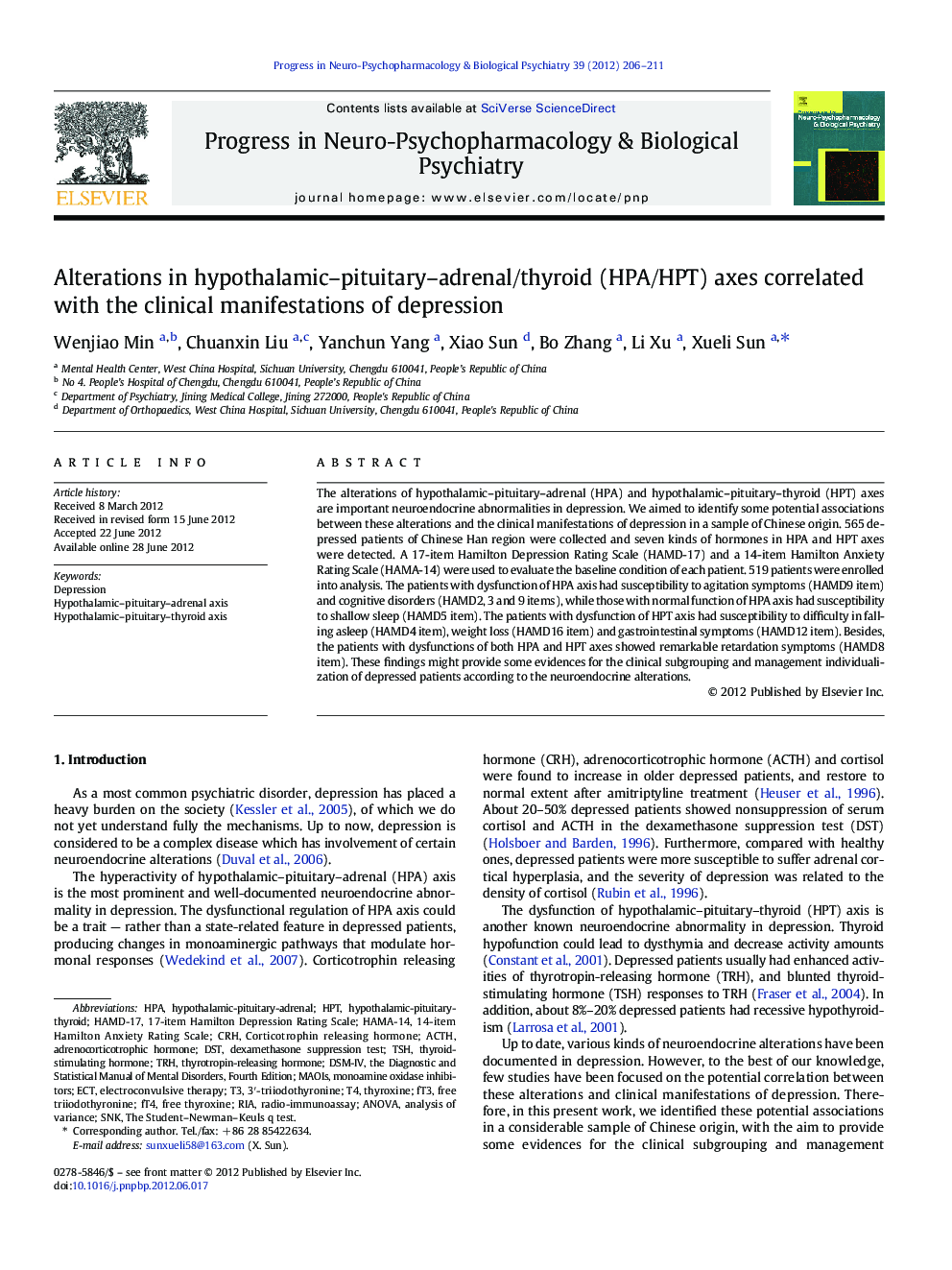| کد مقاله | کد نشریه | سال انتشار | مقاله انگلیسی | نسخه تمام متن |
|---|---|---|---|---|
| 5844917 | 1128036 | 2012 | 6 صفحه PDF | دانلود رایگان |

The alterations of hypothalamic-pituitary-adrenal (HPA) and hypothalamic-pituitary-thyroid (HPT) axes are important neuroendocrine abnormalities in depression. We aimed to identify some potential associations between these alterations and the clinical manifestations of depression in a sample of Chinese origin. 565 depressed patients of Chinese Han region were collected and seven kinds of hormones in HPA and HPT axes were detected. A 17-item Hamilton Depression Rating Scale (HAMD-17) and a 14-item Hamilton Anxiety Rating Scale (HAMA-14) were used to evaluate the baseline condition of each patient. 519 patients were enrolled into analysis. The patients with dysfunction of HPA axis had susceptibility to agitation symptoms (HAMD9 item) and cognitive disorders (HAMD2, 3 and 9 items), while those with normal function of HPA axis had susceptibility to shallow sleep (HAMD5 item). The patients with dysfunction of HPT axis had susceptibility to difficulty in falling asleep (HAMD4 item), weight loss (HAMD16 item) and gastrointestinal symptoms (HAMD12 item). Besides, the patients with dysfunctions of both HPA and HPT axes showed remarkable retardation symptoms (HAMD8 item). These findings might provide some evidences for the clinical subgrouping and management individualization of depressed patients according to the neuroendocrine alterations.
⺠Patients with HPA dysfunction have susceptibility to agitation symptoms. ⺠Patients with HPA dysfunction have susceptibility to cognitive disorders. ⺠Patients with HPT dysfunction have susceptibility to difficulty in falling asleep. ⺠Patients with HPT dysfunction have susceptibility to weight loss. ⺠Patients with HPA/HPT dysfunctions have remarkable retardation symptoms.
Journal: Progress in Neuro-Psychopharmacology and Biological Psychiatry - Volume 39, Issue 1, 1 October 2012, Pages 206-211